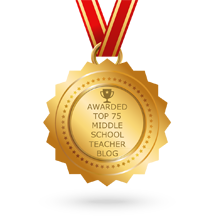Good morning! Is anyone out there getting acquainted with the new Reading Units of Study from Lucy Calkins and her colleagues at The Teachers College? We are so lucky to use this curriculum in our school district, and so our teachers are beginning to orient themselves to the new units of study. In an effort to smooth things out, I've created a little cheat-cheat to figure it all out!
First, let's start with the books.
This book does a really nice job acquainting the reader with the curriculum. In this book, you will learn more general information about Reading Workshop and the research and theory behind it. This book is also the source of this blog, as it directed me to what was most important to read as we begin instruction.
Reading Units of Study: The Lesson Plan Books
Each grade level's curriculum includes four spiral-bound units of study. Since I head fifth grade in my district, I'm going to share theirs:
- Interpretation Book Clubs: Analyzing Themes
- Tackling Complexity: Moving Up Levels of Nonfiction
- Argument and Advocacy: Researching Debatable Issues
- Fantasy Book Clubs: The Magic of Themes and Symbols
These four books are the meat and potatoes of the curriculum. Teachers will be reading these books day in and day out and using them for instruction.
Reading Pathways: The Assessment Book
This book is really a toolkit for reading assessment. In it teachers will find information about running records, bands of text complexity in both fiction and nonfiction, learning progressions of different standards across grade levels (think vertical alignment), performance assessments, and assessment tools.
If... Then... Curriculum: The Differentiation Book
This book has letters to teachers at each of the three intermediate grade levels. It offers a very broad overview of the year. Then, it gives alternate units of study that teachers and use if they need to modify the grade level given units of study.
Getting Started
Now that you know about the books, here are Calkins' recommendations for getting started in the Intermediate Grades. (Primary grade teachers, slightly different.) If you're like our teachers, you don't have time to read the whole first book of lesson plans, and in fact, Lucy doesn't even recommend that. Here's how you should begin:
- Grab the first book of lesson plans that you are going to teach. At the beginning of each of these is An Orientation to the Unit. You can find this right after the acknowledgements. Read that first, and then read the first session of lesson plans.
- Next grab Reading Pathways. Look up the Learning Progressions in the table of contents. Go to that section, pick one strand, and read the progression of work children do across the grade levels. This will help you see what students were expected to do before coming to your class, and also see the depth that you will take your teaching on each standard (for example, on Time, Plot, and Setting).
- Now you're ready for the If... Then... Curriculum. In the very front of this book are letters: A Letter to Teachers of Grade 3, Grade 4, Grade 5. You'll want to read your letter to get a sense of the units you will be teaching this year.
- If you're new to Reading Workshop, it would definitely help to skim through A Guide to the Reading Workshop.
- Also, check out the online resources at Heinemann's website! You can find your access code in A Guide to the Reading Workshop book.
It seems like a lot to do, but it's just a little bit of reading here and a little bit of reading there. Hopefully this post clarifies the purpose of the books and where to begin!
Who else uses Reading Workshop? Any other tips to offer? Please leave a note in the comments if so!


























What a great overview, Michelle! Thanks for sharing.
ReplyDeleteThis comment has been removed by the author.
DeleteHey Michelle! We're using Lucy's new reading units this year too. After many years of attending TC during the summer months, I'm happy they FINALLY published these and I don't have to create everything on my own anymore! Woohoo!!
ReplyDeleteOne Lucky Teacher